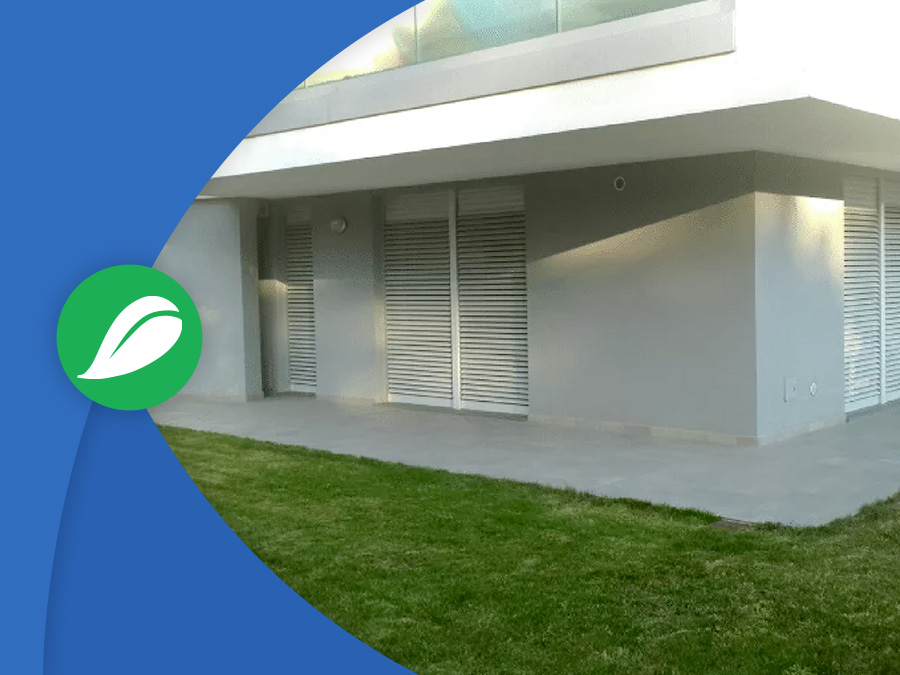What Does NZEB Building Mean?
The concept of Nearly Zero Energy Building (NZEB) was introduced in Europe in 2010 with the Energy Performance of Buildings Directive (EPBD).
According to the directive, by December 31, 2020, all new buildings should be nearly zero energy buildings, and by December 31, 2018, all new buildings occupied by public authorities or owned by them should also meet this standard.
Some regions in Italy, such as Lombardy and Emilia Romagna, implemented these obligations two years earlier, starting from January 1, 2016, for new and renovated public buildings, and from January 1, 2018, for new private buildings.
The European directive also requires member states to promote the transformation of existing buildings into nearly zero energy buildings, following the example of the public sector.
In Italy, the directive was implemented through legislative measures that outline the requirements for achieving high energy performance in buildings, primarily relying on on-site renewable energy sources to meet their energy needs.
Design Requirements for NZEB
The design requirements for an NZEB include:
- High-quality thermal insulation of the building envelope.
- Efficient technological systems.

NZEBs play a crucial role in achieving the goals set by the Paris Climate Agreement (limiting the temperature increase to 1.5°C by 2050) and enhancing energy efficiency in the country. The European goal for 2050 is to have a decarbonized building stock, similar to the NZEB standards, even for existing buildings.
 Energy efficiency in buildings is the most abundant form of energy in Italy, responsible for 38% of the country's energy consumption.
Energy efficiency in buildings is the most abundant form of energy in Italy, responsible for 38% of the country's energy consumption.
Constructing NZEBs and retrofitting existing buildings to meet NZEB standards is essential for reducing energy consumption, achieving the objectives of the National Integrated Plan for Energy and Climate 2021-2030, and combating fuel poverty.
The goal for the near future is to create Plus-Energy Buildings (buildings that produce more energy than they consume), which are not yet addressed by current Italian regulations, unlike other countries like the Netherlands, Denmark, France, Germany, and the United Kingdom.
Most NZEBs currently in Italy have implemented a modest package of technologies, focusing on high thermal insulation of the building envelope, efficient air-to-water heat pumps, photovoltaic systems, and mechanical ventilation with heat recovery.
The use of cross-laminated timber (XLAM) construction technology is also widespread, offering rapid assembly and high thermal performance.
DIn the design of an NZEB, careful consideration must be given to factors such as building orientation, insulation, ventilation, natural lighting, shading, and the use of renewable energy sources.
The project must be carefully planned in all its aspects, from the choice of materials and construction techniques for the construction of the dissipating envelope to the type of technological systems to be installed.
It is necessary, therefore, to:
- Evaluate accurately the geometric shape, orientation, and characteristics of building components (walls, floors, windows, etc.).
- Design summer comfort, defining the surface treatment of glass, solar shading systems, and shading, the possible use of ventilated walls, the use of light and subdued colors for horizontal and vertical external surfaces.
- Reduce transmission losses by providing high insulation of the dissipating building envelope.
- Reduce ventilation losses by ensuring the airtightness of the building, with particular attention to the correct installation of windows and the correction of thermal bridges.
- Install a Controlled Mechanical Ventilation (CMV) system with heat recovery that can ensure the correct air exchange in indoor environments.
- Use natural light to reduce electricity used for lighting.
- Adopt LED lighting fixtures equipped with management and control systems.
- Install low-energy consumption air conditioning and controlled mechanical ventilation systems capable of ensuring the thermal-hygrometric comfort of users.
- Install renewable energy systems such as solar thermal for the thermal energy of domestic hot water and photovoltaic or wind systems, combined with storage systems, for the electrical energy of heat generators, lighting fixtures, appliances, summer air conditioning systems, and controlled mechanical ventilation systems.
- Use monitoring and remote control systems, capable of managing panels and systems remotely by scheduling ordinary and extraordinary maintenance and monitoring consumption by implementing energy-saving interventions.

